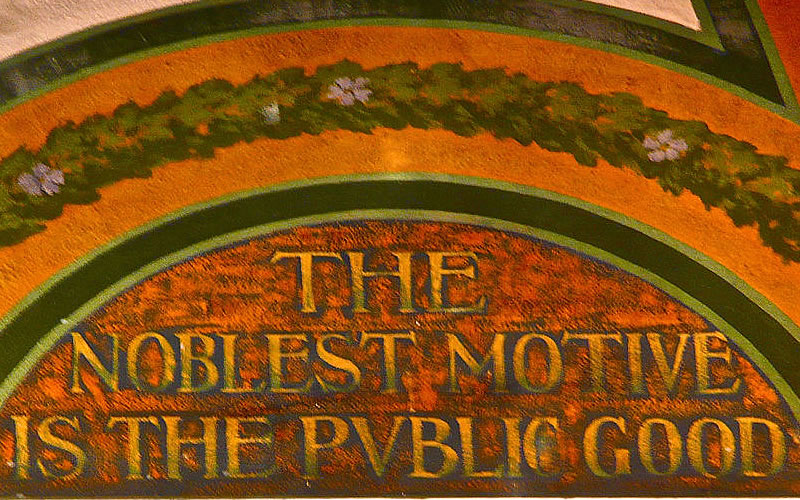By Fred Palm, contributing columnist | The recent eighth government shutdown since 1980 provides an opportunity to consider the “common good” in America and why we need to embrace it.
 After our Revolutionary War the winners set about to invent a way to govern a nation that was not available. The founders gathered in Philadelphia to specify a model of governance to provide the people with the opportunity for “life, liberty and the pursuit of happiness” that was expressed in Declaration of Independence in the prior decade.
After our Revolutionary War the winners set about to invent a way to govern a nation that was not available. The founders gathered in Philadelphia to specify a model of governance to provide the people with the opportunity for “life, liberty and the pursuit of happiness” that was expressed in Declaration of Independence in the prior decade.
The common good is central in the construction of our constitutional institutions. The executive, legislative and judicial powers expressed in the Constitution of the United States are divided at the federal level and similarly divided among the three elements in the states in a federalism structure. For good measure, the “bill of rights” amendments are carved out to specify what was out of reach of governance and belonged to the people, as opposed to those holding authority.
All of the apparatus of governing to secure our liberty and freedom rested on the belief that the dispersed and divided powers would be brought together when the holders would act in and for the common good, thereby lessening the tyranny when power existed in too few hands. In theory, there is balance but in recent history the coming together for the common good has not happened.
The Pew polls have documented the distrust of government since the 1970s (Nixon- Vietnam Era), to a growing political divide since 1994 (Clinton Era) to today (Conspiracy Era). Sometimes compromise is thought to be expression of the working together for the common good. It’s the distinction between processes — the compromise, and the outcome or result – that the common good is closer.
The common good or the intangible “general welfare” refers to actions related to collective action and active participation by many for the benefit of the many. It benefits society as a whole, in contrast to the private good of individuals and groups in a society. If government funds a highway without tolls, it is a common good. If the right to build the highway is offered to a corporation so tolls can be charged for its use by those willing and able to pay for the use, a private good is created.
The idea of the common good has a long history. Scholars have traced the notion from Jeremiah where the new covenant was prophesized because scoundrels were found among people, all individuals, business leaders and government and the nation as a whole, for failing to care for others who could not offer some economic benefit in return, including orphans, the needy, aliens, widows and innocents. There is a consideration to act beyond what is specified in the
Commandments. In his sermon, Jesus said. “Therefore, whatever you want men to do to you, do also to them, for this is the Law and the Prophets.” Following the law is not good enough. Thereafter, the Renaissance and the American Federalist Papers’ debates recast the notion into the political and public policy framework.
The common good speaks to characteristics of the decision made by the ruler, king, president or whomever has the final authority. We intuitively recognize that some decisions are better than others. Those decisions that can be sometimes described as win-win takes us in the direction of decisions that provide outcomes that are beneficial across the board; that have that intangible common good quality. It is hard to reach into the effects of decisions in education or health care to know if it resulted in a benefit for the common good as the outcomes are many and variable.
In Charleston County, we are going to experience what could be a clear indicator of a common good decision with the to-be-defined flood defenses from increasing high water. Charleston Mayor Tecklenburg recently said “…after a history of ill-advised development in some areas, and three major flood events in three years, we simply must make flooding and drainage our city’s top long-range priority.” If the scope of the policy is only drainage, it means the policy has failed. The flood line high water and dry sections of land observable after the flood waters recede will be the direct evidence of how good or poor were the prior decisions and if they were made for the common good.
Fred Palm of Edisto Island is a retired professor of oversight and investigations at the John Jay College School of Public Management and a former executive director of the Association of Inspectors General.




 We Can Do Better, South Carolina!
We Can Do Better, South Carolina!

























One Comment